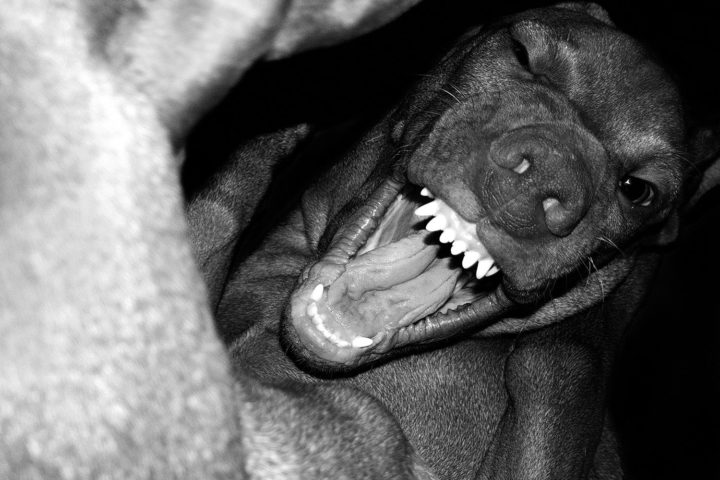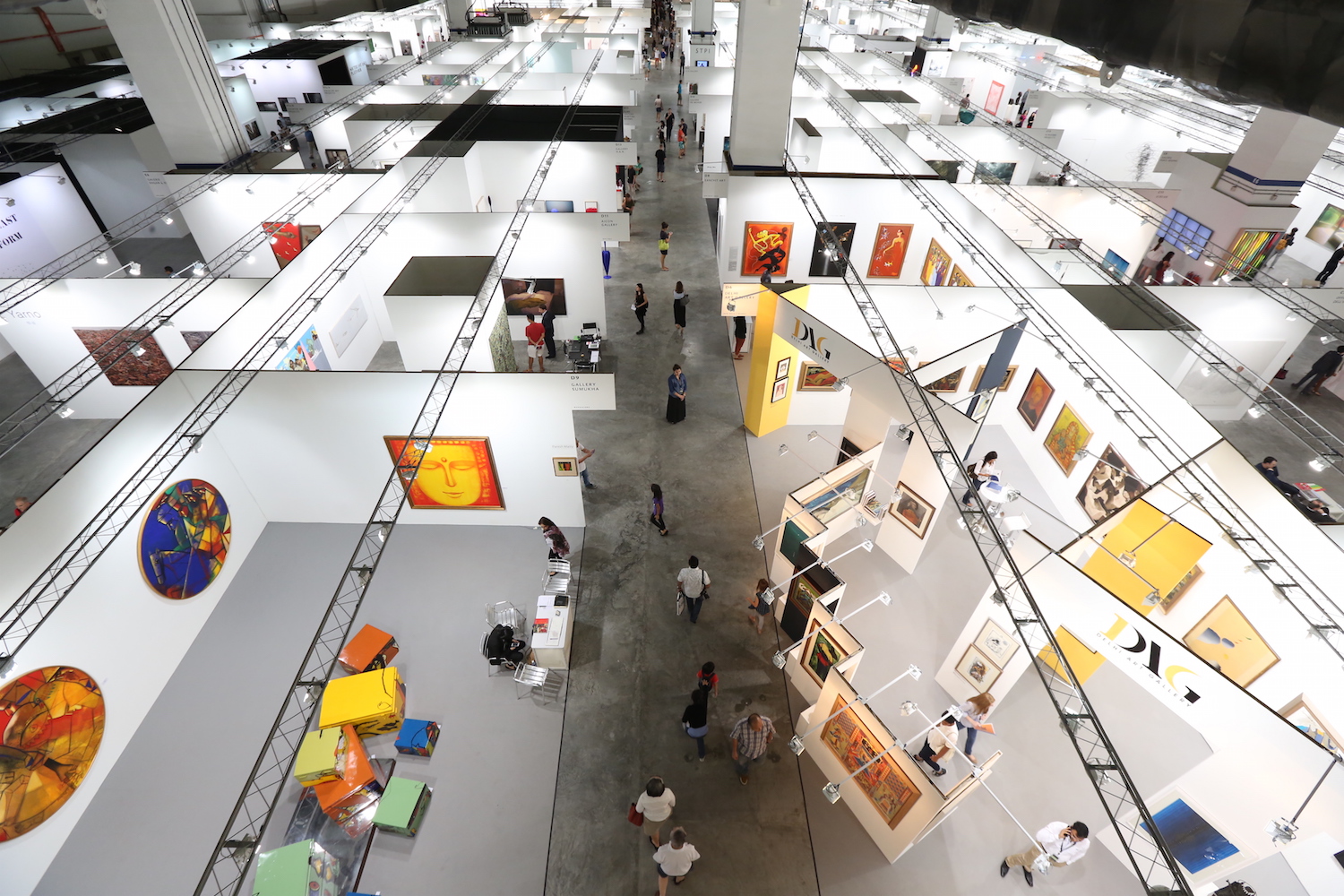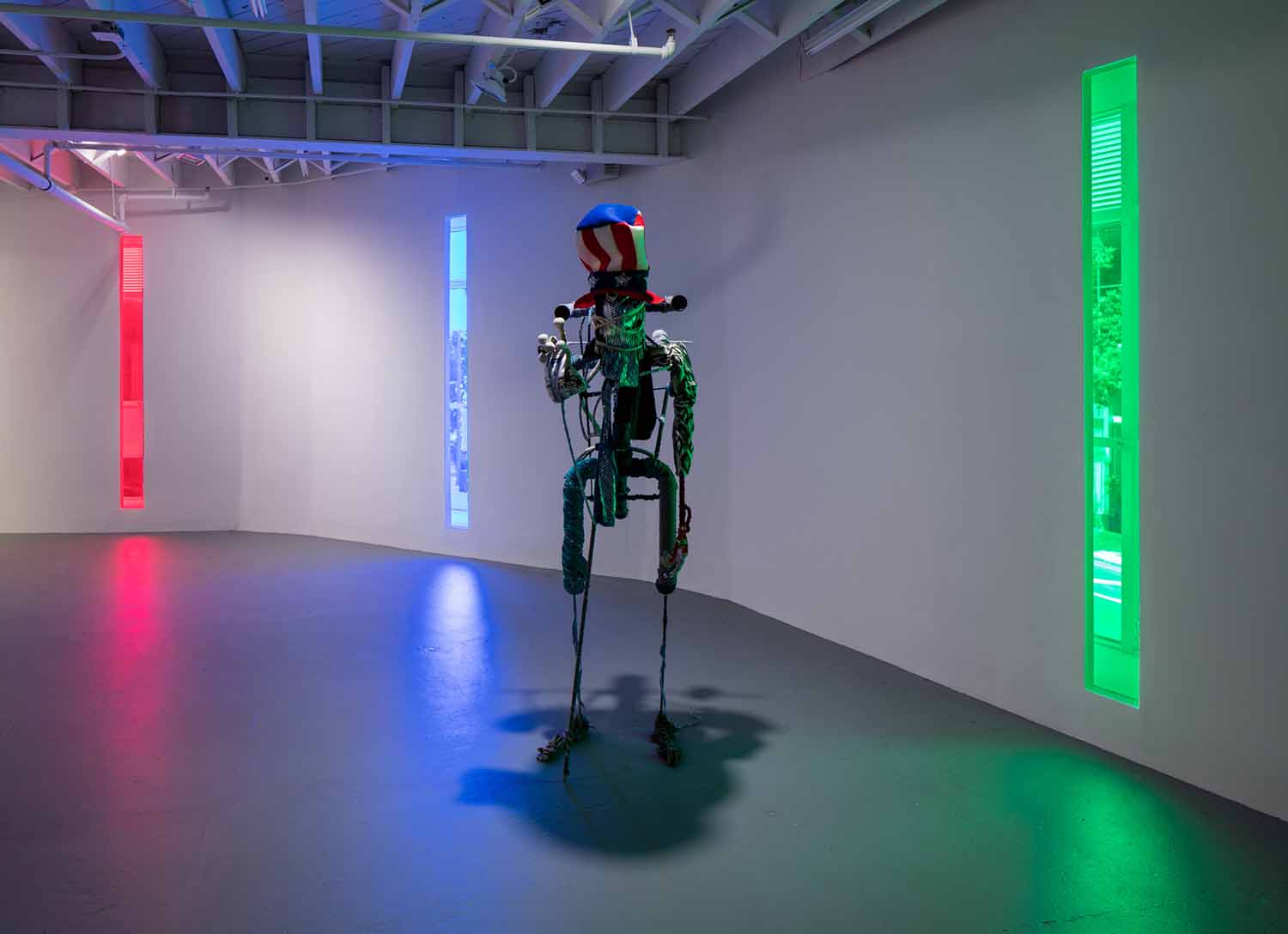Claudio Santoro in conversation with art collector, photographer and philanthropist Jean Pigozzi at the Galerie Gmurzynska booth at Art Basel Miami Beach.
Claudio Santoro: I spent hours in the “Art/Afrique, le nouvel atelier” exhibition at Fondation Louis Vuitton. Do you have more plans to exhibit your collection?
Jean Pigozzi: We’re going to do an exhibition of works by Bodys Kingelez, who created the model cities from the “Art/Afrique” exhibition. We will have a show next spring at MoMA, in May 2018. That’s the first time that an African artist will have a solo show at MoMA.
CS: Can you tell me a bit about Bodys Kingelez?
JP: He’s from Congo (Zaire) and, sadly, passed away. He was a documentary filmmaker who would make these individual buildings. When I met him I said, “Bodys, why don’t you make a city? It’s much more interesting.” So he started making these very big cities that would have like twenty buildings. I own four of the big cities, and I think he made seven. Fondation Cartier has one, Agnes B and someone in Germany. At MoMA we are going to do a virtual reality thing with Oculus, where you will fly inside the city.
Bodys was completely self-taught. I don’t know if he knew who Le Corbusier or Zaha Hadid were or anything. That’s why I’m so interested in African artists. Pre-internet. They had very little information, so everything that they did really came from the inside, or from tradition, or completely from their imagination, or from a few magazines they could see. That’s why I like that work.
CS: Surrounding Bodys Kingelez’s cities were Congolese night scenes painted by Moké. I’m always reminded of them when I see colored lights reflecting off someone’s skin.
JP: I gave one of these paintings to a friend of mine who showed [Francis] Bacon. And Bacon said, “This guy can really paint.” And Bacon was not an easy man to impress.
CS: When you’re away from home, what might trigger a memory of your collection?
JP: I go to Japan quite often because I collect Japanese art, so I go and buy stuff there. I go to every fair and hundreds of galleries and museums every year, but I’m very focused now, so I really only buy African and Japanese art.
CS: Why did you decide to focus on Japanese and African art?
JP: Because you have to be focused on your collection. A lot of these collections are not interesting because they have one Warhol, one Prince, one this, one that. It’s not interesting. I’m trying to collect in depth, so if I like an artist, I’ll buy ten pieces by the artist. The artists I buy are more reasonable. You couldn’t have ten Van Goghs or ten Picassos, even though some people do. If you go to a provincial museum, they will have one Sisley, one Rembrandt, one Yves Klein. So they only know one example of the artist’s work. If you go to MoMA there are five Yves Kleins, so now you understand what the works are all about. If you saw the show we did at Louis Vuitton, we showed five to ten pieces of each artist, so you could really understand in depth what the artist is all about. That’s what I find interesting.
CS: What made you want to start collecting?
JP: I’m a sick collector. I collect anything. I would collect toothbrushes. I collect absolutely everything. If there was something like “Collectors Anonymous” I would be there, but it doesn’t exist. There’s very little I buy from the gallery. About ninety-nine percent of my African collection we bought directly from the artists because there were no galleries representing them. The Japanese works came from galleries in Tokyo.
CS: How did your collection start?
JP: I had a collection like a bad dentist from Minneapolis. A little Clemente, a little this, a little that. And then I became friends with Charles Saatchi, and he told me my collection was ridiculous. So I went to a show in Paris called “Magiciens de la Terre” about thirty years ago. And I saw some African art in the show, the day it was closing actually. I called the museum the day after and asked “What are you gonna do with this stuff? Can I buy it?” They said no, because it was owned by someone else, but that I could meet the curator called André Magnin. I asked what he was doing now and he said: “My dream is to keep going to Africa.” So I hired him, and for twenty-three years we worked and put this collection together.
CS: What do you think your collection says about you?
JP: It says a lot. Everything I do in my life is slightly different. I couldn’t imagine having a collection with a little Warhol, a little Clemente, a little Prince. I really wanted to have a collection that was very different. Nobody has my African collection. Now I have a very Japanese collection, and nobody is really collecting that either.
CS: That says something about you.
JP: I have no interest in being like everybody else. It’s not something that turns me on.
CS: And does that attitude translate into your photography?
JP: I don’t like people posing. I have no interest in people posing. So I try to take them when they are a little bit off balance. Not people picking their nose or doing drugs, but taking pictures that are slightly imperfect.
CS: Do you think you’re photogenic?
JP: Myself? No. But I’m not vain so I couldn’t care less.
CS: Do you prefer acquiring works in the context of a fair or gallery or directly from an artist?
JP: It doesn’t make a difference. For instance, here [at Art Basel] I did my shopping yesterday morning. I had a map and I ran from one place to another, and I did it, and it was done. I got three things yesterday morning, one African and two Japanese.
CS: Did you consider bringing your dogs, Charles and Saatchi, to Miami for the fair?
JP: They are in the South of France. They are very crazy, high-strung dogs. They would be running around driving everybody crazy. They’re not like quiet, living room dogs. I wanted to play some recordings around the photographs of them barking, but you’re not allowed to do that at the fair.
CS: How would you characterize Charles and Saatchi?
JP: They are very cute and affectionate dogs. They think they are smart but they have no understanding of space. They are not really interested in other dogs, but they love humans and expect people to talk to them. They’re Hungarian so they’re philosophers.
CS: Do you spend much time going through all the pictures you take?
JP: I don’t really go through them unless I have a project. I really just like doing “click.”
CS: Any final remarks?
JP: Sell toothpaste.



